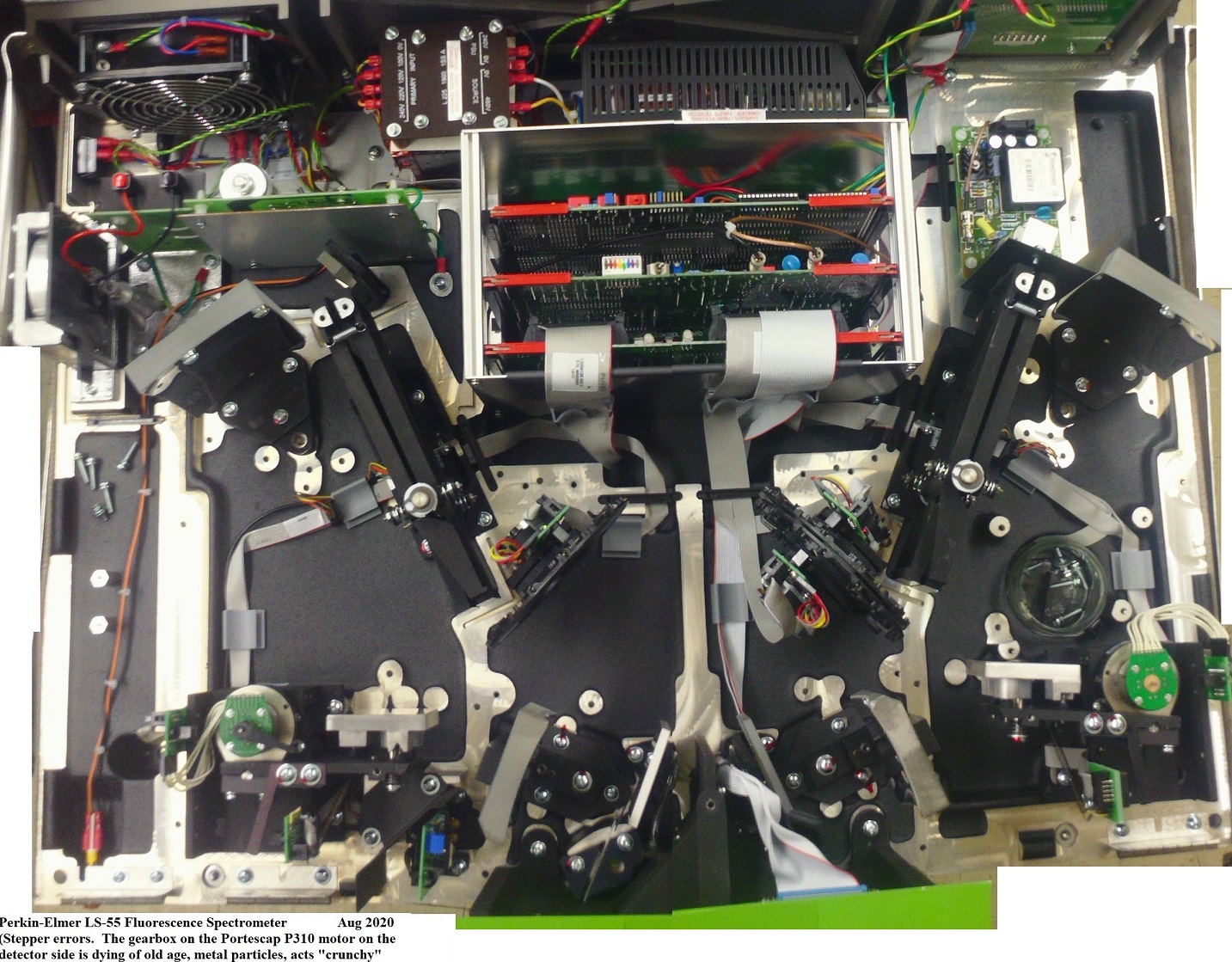LS-55 Spectrophotometer, Perkin Elmer
Grating stepper-motor errors, shaft jitters, skips steps
These expensive ESCAP stepper-gearmotors always age and fail. They rotate the grating assemblies, running back and forth constantly, and eventually some brass particles build up in the gear teeth, causing motor errors or other crazy behavior. Perk Elm says: always replace both motors, if you work on one. (I'm only replacing the detector-grating stepper, since the bad one has very low torque, while the source-grating stepper has some years to go before it turns flakey. $900 each in 2021.)
Old motor is weak: watch the rotating plastic flag, motor starts jittering and skipping some stepper pulses, yet it only needs to deliver a quite small torque (must have some shorted windings?) With a finger on the center of the rotating flag, that stepper stalls, but the source stepper does not (unless you push down really hard!) Measured drive pulses are the same for both motors. Besides motor coils, the problem appears to be gearbox contamination. I completely disassembled the gearbox, cleaned out everything, then re-greased with black molyb. Doing this greatly reduced the motor-error rate, from originally jittering and not even passing start-testing, to only causing motor-errors about once a day during constant use. Guess the brass teeth are still shedding particles.
You can replace the motor, but how to perform opto re-alignment? I didn't bother. Instead, BEFORE touching anything, very carefully record the position of each rotary black plastic flag, at the moment that the home-detect microswitch goes click, or the home-sense opto-slot changes state. The position of this flag will change the position of all the measured nM peaks. Once the detector-grating motor is replaced, use the instrument software to run a manual selftest with DDW in the cuvette, and see how many nM the peak is off from expected value. If it's wrong, loosen and rotate the flag about 20deg, then close up and run selftest, to see the direction and the nanometers change of the moved peak. Figure out how much the flag needs to be turned, in order to move the peak to correct value. (If proper value can't be reached, time to call Field Service, for instrument full cal.)
